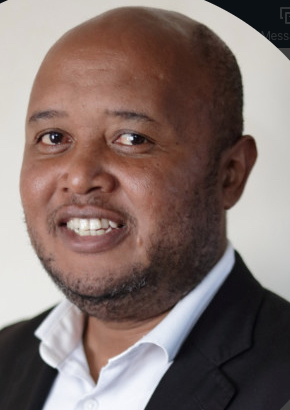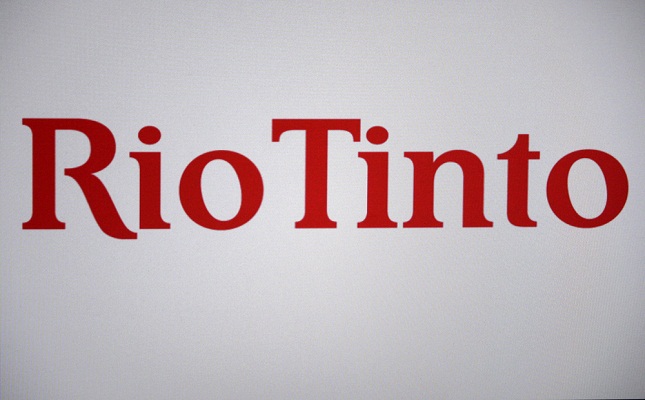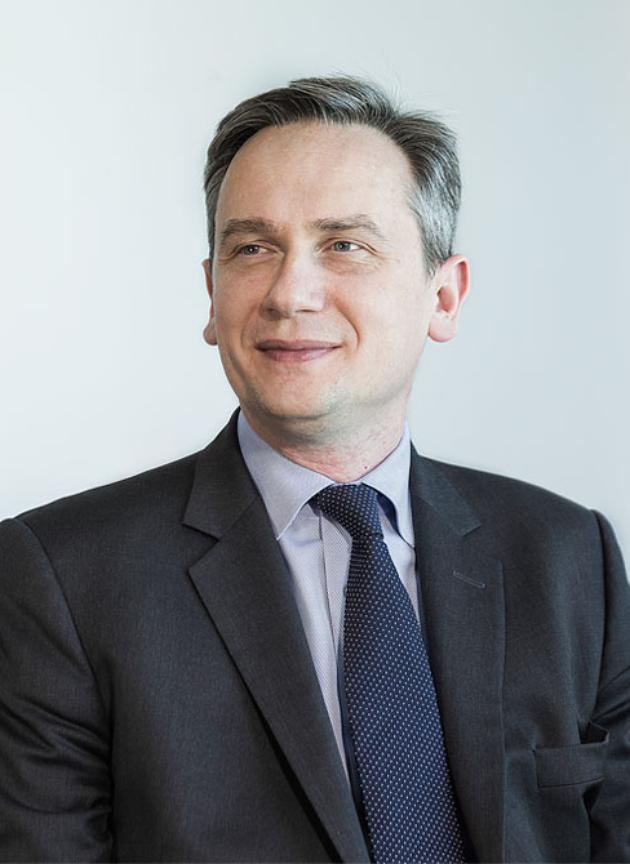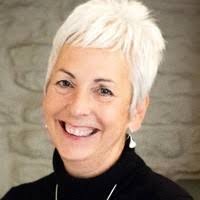
Malagasy civil society Representative Eryck Randrianandrasana
Eryck Randrianandrasana of Publish What You Pay Madagascar (PWYP MG) had planned to come to the UK to participate in the Rio Tinto AGM and ask the company some thorny questions about its QMM operation which is mining ilmenite in the south east corner of his country. The London Mining Network was supporting Eryck’s travel and participation at the AGM, in collaboration with its member organisation The Andrew Lees Trust (ALT UK) . The Trust has been working closely with PWYP MG and PWYP UK since 2018 to address questions arising around the QMM breach of a buffer zone and related environmental and governance issues.
This year’s Rio Tinto AGM was held virtually because of the Covid 19 restrictions. There was no visual contact with the RT executives and rather poor sound quality. There was no dial in number/code for Madagascar for the virtual AGM, so Eryck was having to call in using the internet via a UK freephone number. The line cut every ten-fifteen minutes.
Eryck had already submitted his question in advance and it was the first to be read out by the Chair of Rio Tinto, Simon Thompson. Yvonne Orengo, Director of Andrew Lees Trust (ALT UK), also attended the virtual AGM to pose questions about QMM and the contamination of local waterways.
BELOW is a transcription of the exchange at Rio Tinto’s 2020 AGM concerning the QMM mine (caveat: any omissions or incorrect words are due to poor sound quality)
FIRST is some commentary …….
The Q&A raised more issues than it provided answers: The company completely avoided the issue of there being no evidence on which they based their claim to shareholders in 2019 that the impact of the QMM buffer zone breach was “negligible”. Instead the CEO talked about overflow incidents that happened at least four years later, emphasising the national regulator, the National Office for the Environment (ONE) ‘s actions on these matters. Any recent improvement in monitoring of QMM by the ONE is subsequent to complaints formally raised with the Malagasy Government about failures in environmental governance, transparency, and concerns that the ONE – QMM relationship in Anosy was compromised.
Rio Tinto tried to highlight the lack of chemical additives in the extraction process to defend questions about QMM’s water contamination. The mention of chemicals is designed to obfuscate. The contamination is caused not by chemicals but because in separating the mineral sands – sands which contain naturally occurring radionuclides such as uranium and thorium – the extraction process concentrates radionuclides and heavy metals in the mining pond. This concentration effect is a well know phenomena of mineral sand extraction (WHO 2012). Elevated uranium is clearly identified in the QMM mining pond water using QMM’s own water data by Dr Swanson, a radioactivity expert, and as high as 1.9mg/L. Swanson concluded “The QMM mine definitely releases more uranium into water on the site, thus creating an enhanced source of uranium to the Mandromondromotra River and Lac Ambavarano“.
Rio Tinto has been unable to provide scientific evidence to counter ALT UK’s additional independent water study findings by Dr Emerman, which have reinforced Swanson’s findings, demonstrating elevated uranium, thorium and lead and QMM’s negative impact on downstream water quality with 99% confidence. Nor can the company demonstrate that QMM’s water management system using settling ponds (paddocks) successfully removes the contaminants so that waste waters are “safe for the community and environment” when they are discharged. They simply say it does.
Separately, the radioactivity study that Rio Tinto cites (ALT UK’s independent study by Swanson, 2019) explains that it is impossible to draw general conclusions about radiation impacts of the mine, due to the “unacceptable” level of QMM monitoring. However, the study was able to identify elevated uranium in water 50 times higher than WHO guidelines and recommended safe drinking water provision. The radiation study Rio Tinto is now undertaking is their first to address radiation in the wider environment e.g. ingestion pathways post mining, but will not measure environmental contamination such as from heavy metals. The other studies mentioned by Rio Tinto were pre mining in 2001 (baseline), then focused on worker exposure (2012); one followed ALT UK raising the radiation issue in 2017; and the “2018” study was in fact ALT UK’s independent review by Swanson, published in 2019, in which all previous, available QMM studies were reviewed. There are no available health studies about the impacts of the QMM mine in Anosy.
The water contamination, and the lack of safe drinking water provision remain on the table. All the Trust’s independent studies are available here.

Transcription of Q&A Below
FULL AUDIO RECORDING of the Rio Tinto 2020 AGM is available HERE
Eryck’s Question is read out at 32.43 – with answers until 42.00
Yvonne’s question is presented 43.00 and answers /exchange to 50.55
 Eryck Randriandrasana’s (PWYP MG) question to RT:
Eryck Randriandrasana’s (PWYP MG) question to RT:
At its AGM last year Rio Tinto admitted that its QMM mine had breached a protective environmental buffer and had encroached onto the adjacent lake bed. It said this was “a mistake”. Rio Tinto assured shareholders and the public that the impact of the QMM breach was “negligible”. It cited the Malagasy state regulator for this analysis. We have repeatedly asked for evidence as to how the regulator reached this analysis.
It is important because the breach raised concerns about exposure to contamination of local waters by QMM processing and local people fish and draw their drinking water from the lakes and rivers around the mine.
Rio Tinto knows that our requests to the state environmental regulator in Madagascar and QMM have failed to produce evidence that any technical studies were evercarried out by the regulator on this question. Last December, Rio Tinto told an international journalist “We are not aware of any formal inspection report”. That means Rio Tinto reported no “negligible impact” of the breach, knowing this was based on nothing.
Under its obligations to the people of Madagascar and its shareholders, Rio Tinto is legally obliged to report clear information about the status and risks of its assets, as well as those of its subsidiaries. Rio Tinto is also committed to applying the highest standards and, where local ones may fail to meet these, states Rio Tinto will default to its international standards.
Rio Tinto knows that the Malagasy regulator does not have the capacity to objectively monitor QMM mine performance against realistic indicators. Also, that the regulator has been financially dependent on QMM, which is a problem. Local people also do not have capacity to monitor the mine. For this reason, we have welcomed the independent studies about the QMM buffer breach, radiation issues and water quality. These studies provide clear evidence of water contamination downstream from the mine – with elevated levels of uranium, and lead, at least 50 times higher than WHO safe drinking water levels. We do not think this is a “negligible” impact of QMM on our environment.
We welcome QMM’s contribution to help the Covid 19 effort in Anosy – but if it can find the means and goodwill to do this, why won’t it provide safe drinking water to communities when its mine is contaminating their natural water sources…
Will RT produce hard scientific evidence that there is absolutely no water contamination from its QMM mine from heavy metals, and no negative environmental impacts or health risks to communities living around the mine? If it cannot do this, will it 1) stop making unsubstantiated claims 2) provide safe drinking water to local people and 3) urgently mitigate its waste water and mine tailings management.
 Jean Sebastien Jacques (JS), CEO Rio Tinto response:
Jean Sebastien Jacques (JS), CEO Rio Tinto response:
The question relates to the QMM mineral sands operation in Madagascar. The poverty in this area is very high and Rio Tinto is making a “significant” contribution to Madagascar; it has invested 1 billion $ since construction began around 2000 employees and contractors and 95% are from Madagascar. 80,000 people in the region using electricity provided through the QMM partnership with the Jirama (utility provider). I have been to Madagascar a few times and met with the team and stakeholders. I have also met with ALT UK, PWYP MG and FOE so I have some knowledge of the items.
On the Buffer zone and role of the ONE. We had 2 incidents in 2018 following heavy rainfalls when there were uncontrolled water transfers into the environment from former mining areas. The ONE confirmed the water involved has no impact on people or the environment. ONE issued an initial warning and we subsequently received an official report from their investigation… ONE concluded where some of the transfers changed some of the perimeters of the water in the system, the system returned to normal within two weeks.
To prevent such incidents in the future, ONE provided a recommendation for further analysis. QMM carried out its own investigation to prevent such occurrences from happening again and the berms have been reinforced. It’s important to know that we do not add anything, any chemicals to the water during mining. We are committed to meeting our commitments and responding to any recommendation by the regulator. In terms of the ONE, we follow Malagasy law, as we do in all our jurisdictions. We have provided Publish What You Pay with details on the governing regulations and the governance relationship with the regulator. We are obliged to follow the law and we are supportive of any action to improve the governance and the regulatory framework including the chamber of mines dialogue with the government on this specific issue.
The question of water relates to the zones in mining lead area where the communities are not permitted. And also, the water supplies are outside of these. As already said, our process does not use any additive or chemicals only the water. The mining pond has high concentrations of suspended solids and a low PH as a result of the churning action of the mining process. The water from the mining pond is run through a circuit of settling ponds (paddocks) to passively remove the solids until the water meets the permitted criteria. We have been monitoring water quality and discharges into the natural environment since the operation began. All monitoring reports are reported to the Madagascar regulatory body. We continue to sample both water in the town and the outside environment as part of our ongoing monitoring programme and controls. Using these controls there is currently no evidence to suggest the activities at QMM result in health impacts to surrounding communities.
Now on radiation. It is worth noting that a limited amount of naturally occurring radioactive minerals such as uranium and thorium are characteristic of the geology in Madagascar where QMM is situated. The actual scoping of public exposure as a result of QMM activities was rated low in prior baselines study that have been conducted.
After ALT UK raised concerns about radiation exposure pathways from these naturally occurring radioactive materials in 2018 we agreed to participate in a supplementary study to review once again the risk of radiation in this area. The report concluded that it’s highly unlikely that exposures to naturally occurring radiation as a result of NORMS exceeded the IAEA dose limits, consistent with previous baseline studies.
We agreed that available monitoring data does not currently allow us to prove this in a concrete way especially in terms of ingestion pathways. So, we have asked an international consultancy JBS&G to begin a year-long study from December 2019 to collect this supplementary data and the design of the study takes recommendation from the ALT UK report. So, the work is underway and when we have the results, we will make sure that the relevant findings are made public and we are committed to all stakeholders as well as peer review panel of experts at the end of the study. So that I think covers most of the items raised by Eryck.
 Yvonne Orengo, Andrew Lees Trust (ALT UK)’s question followed straight after by phone:
Yvonne Orengo, Andrew Lees Trust (ALT UK)’s question followed straight after by phone:
We welcome the new radiation studies as these were a recommendation of ALT UK’s independent review. But this does not address the urgent water contamination issues that we have urgently raised since last year. 15,000 people continue to draw drinking water from natural water sources around the mine which are contaminated by uranium and lead discharged by the mine.
You said last year and again just now that the mining process only uses water, and changes nothing in the natural environment… but you have conceded in writing that the extraction process concentrates radio-nuclides, like uranium, and also heavy metals, in the mining basin; these are related to the mining operation and are well in excess of WHO safe drinking water guidelines. You have also admitted that the QMM ” process water may have higher concentrations of minerals and metals than deemed safe by drinking water standards”.
Despite claims that your processes are monitored, and everything is “fine” you have not provided us or other CSOs with any evidence about how your waste water management using the settling ponds system is removing contaminants before the process waters are released into the local environment. You simply state that it does. Saying it does not make it true. We are still waiting for evidence. The burden of proof rests with Rio Tinto.
Meanwhile, local people are drinking water from these contaminated lakes and rivers and Rio Tinto refuses to provide safe drinking water to local communities, in line with WHO guidelines. RT/QMM knows that it can contribute to national potable water targets in Madagascar and must do so under the polluter pays principle. You did not answer this question from Eryck. Will you please provide drinking water to the community in Anosy and not put the burden of cleaning up water on the cash-strapped Malagasy government?
 JS RESPONSE
JS RESPONSE
I can only repeat what I said. We are not using chemicals in our process at all, is the first thing. We are monitoring the quality of the water before it is discharged and at this point in time the monitoring shows us that the water is fine as and when it is discharged.
We shouldn’t forget that the very important point I just made about the geology of the ground in this part of Madagascar where you have uranium in the natural form and so on and so forth so the baseline studies are very clear; the new studies will share this information – I fully accept there has been some delays in the study because of Covid 19 the laboratory which his doing the work is currently closed but I really hope this situation will change very quickly and we will be able to conclude the study in order to establish the facts so we can move from this position.
 Yvonne responds
Yvonne responds
You keep re-emphasising that you don’t add anything, but you know that the process concentrates up the metals and radionuclides. The uranium in water downstream of the mine was 350 times higher than upstream. You cannot make the claim that there is no impact from the mine when these kind of results come through from water sampling tests; it indicates there is a serious concern, concerns that were also raised by the radioactivity specialist whose result you never mention, which was that she found elevated uranium 50 times higher than WHO guidelines ; and her first recommendation was for the provision of safe drinking water to the communities. I am pleading with you, as I have for over a year, to please give communities safe drinking water.
 JS CONTINUES
JS CONTINUES
So, you refer to one of the studies that you asked for and you shared the finding with us. Our experts did review the latest report and we did summary response to yourself and your organisation at the beginning of this year but what the experts are saying is that we do not agree the findings are supported by the data…but we have taken the report ….. to support the year-long study by JBS&G.
 Yvonne adds
Yvonne adds
But you said that your study will not look at water contamination so there is a disjoint.
 JS CONTINUES
JS CONTINUES
We said we would do the work we said would do in order to establish the facts – but on the back of what we have we do not believe that the findings in the report are correct…so we need to have the science what we are saying is very important , we need to make sure there is no misunderstanding on the situation and then we continue the dialogue as we have for many years
 Simon Thompson, Chair of Rio Tinto, said:
Simon Thompson, Chair of Rio Tinto, said:
We have had third party audits of radiation issue in water in 2001, 2012, 2014 and 2018. We are now doing a fifth study using the consultants which JS referred to, and we will make the results publicly available and try finally to address this issue.
SEE ALL THE ALT UK COMMISSIONED STUDIES ON THE BUFFER BREACH, RADIOACTIVITY AND WATER QUALITY
London Mining Network co-ordinated an online AGM action with multiple organisations, and questions collectively covered multiple themes including water and tailings management, environmental contamination, mine closure, governance and transparency, and related to the following Rio Tinto mines: QMM in Madagascar, Oyu Tolgoi in Mongolia, Resolution Copper in Arizona, Jadar lithium in Serbia Grasburg in West Papua, Panguna in Bougainville.
London Mining Network’s Report of the Rio Tinto 2020 AGM
